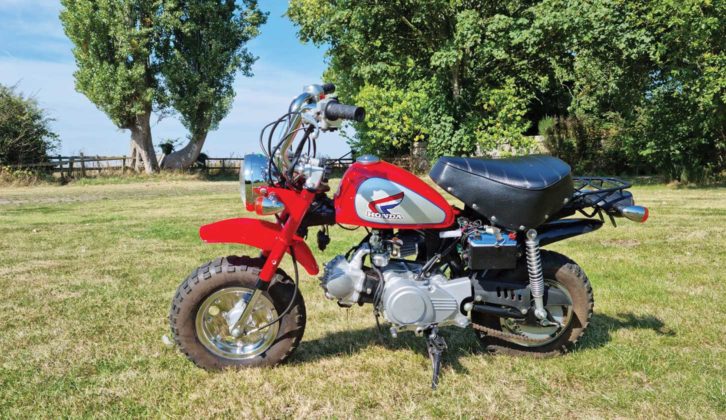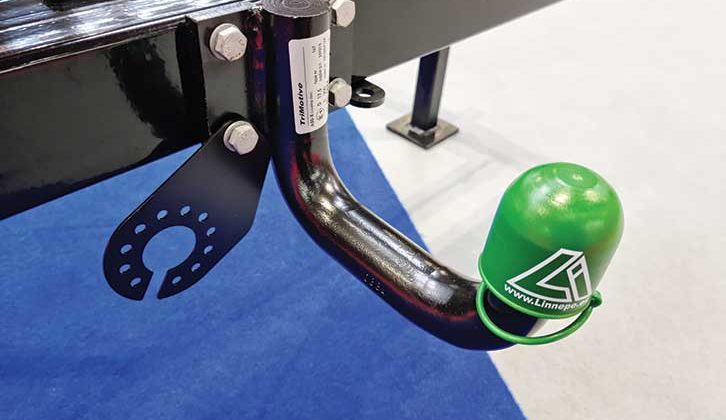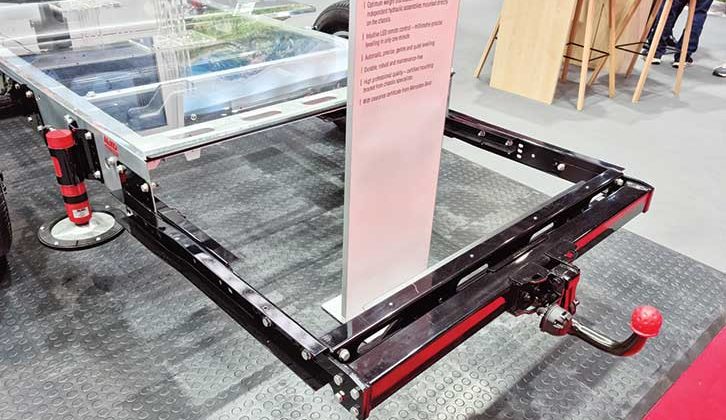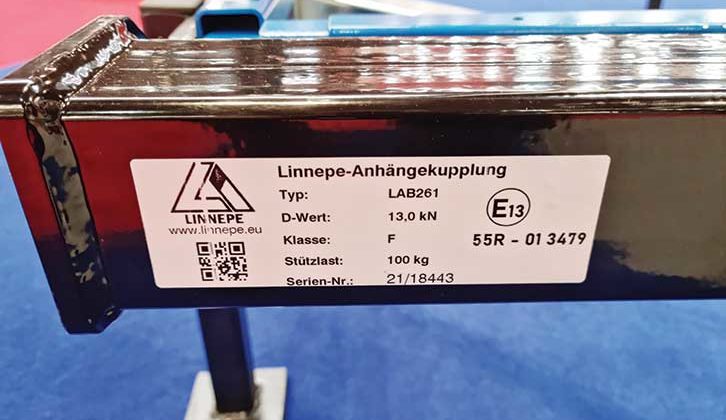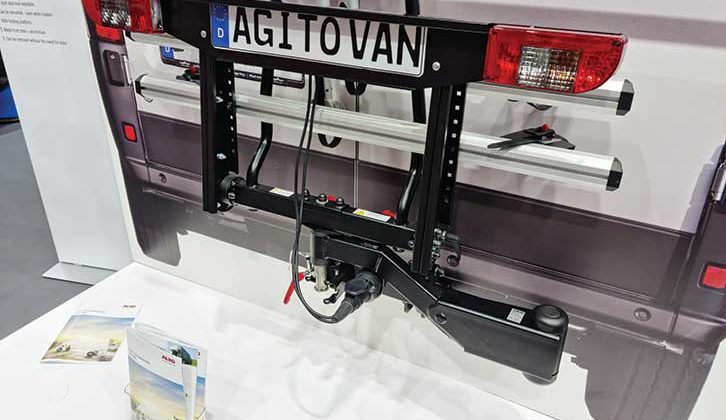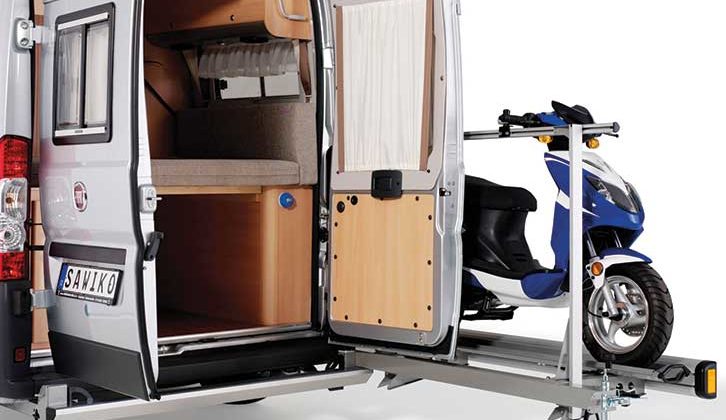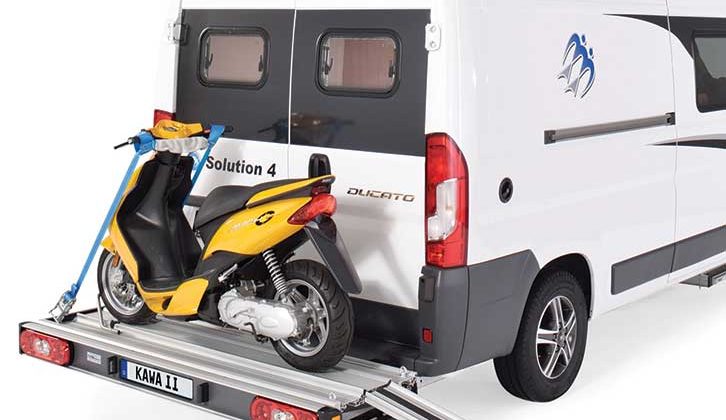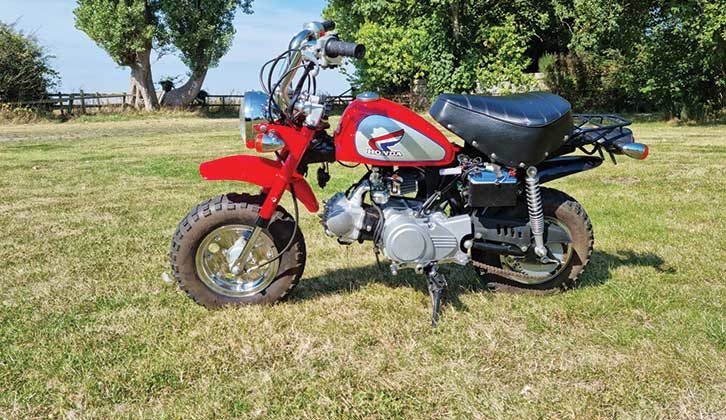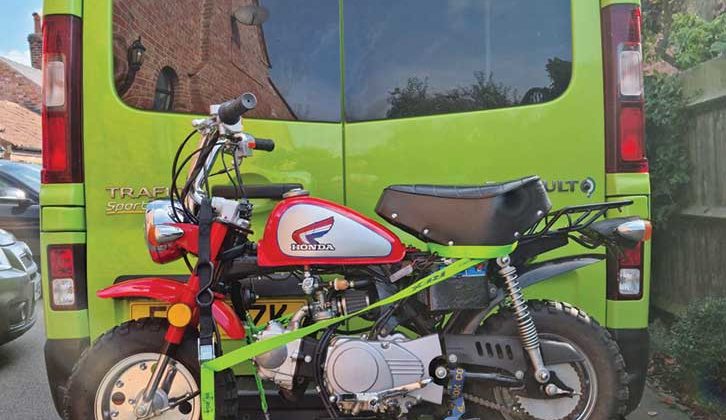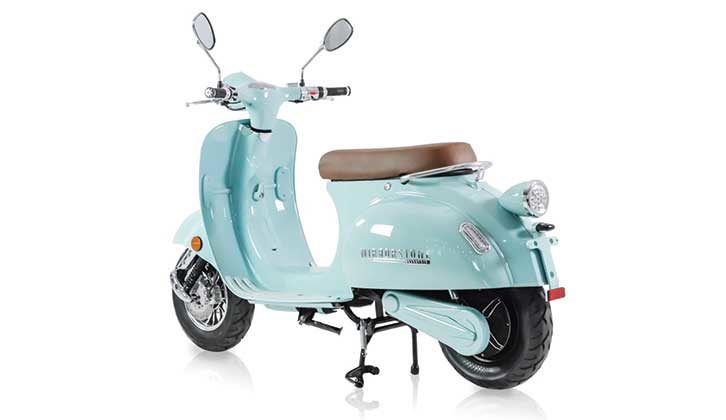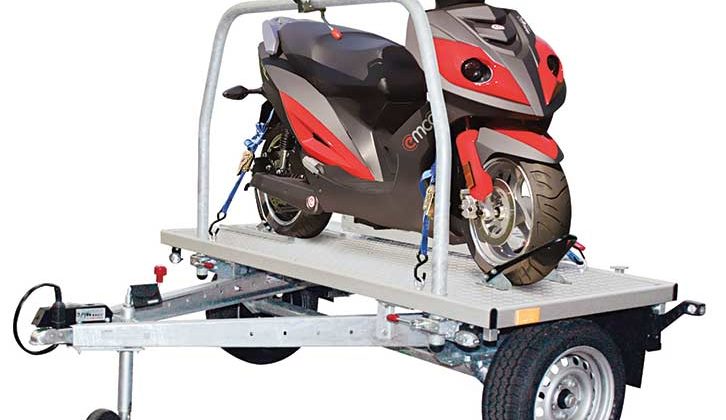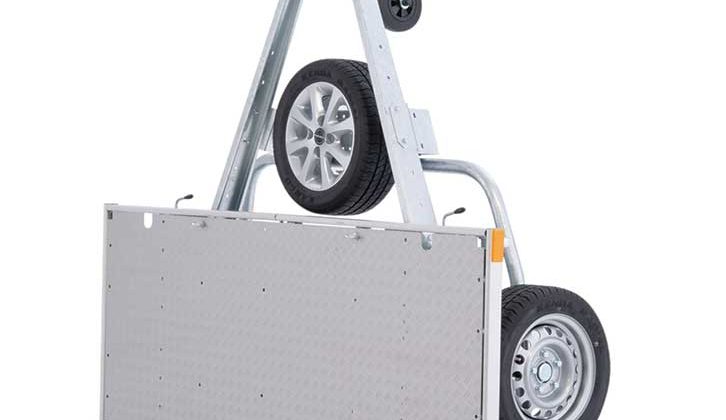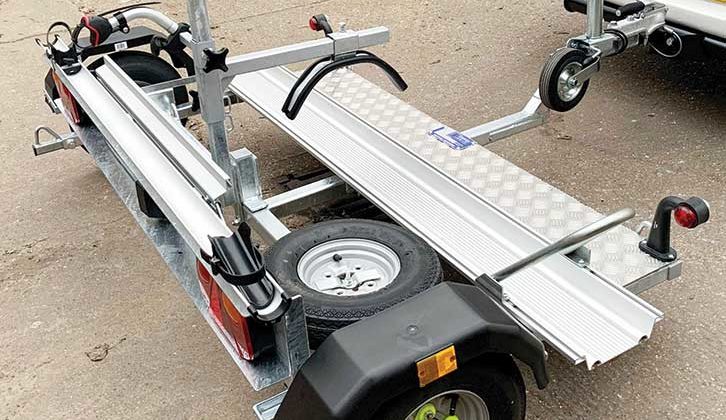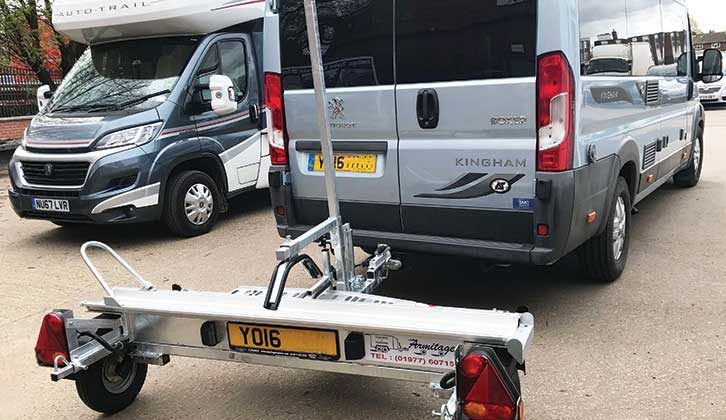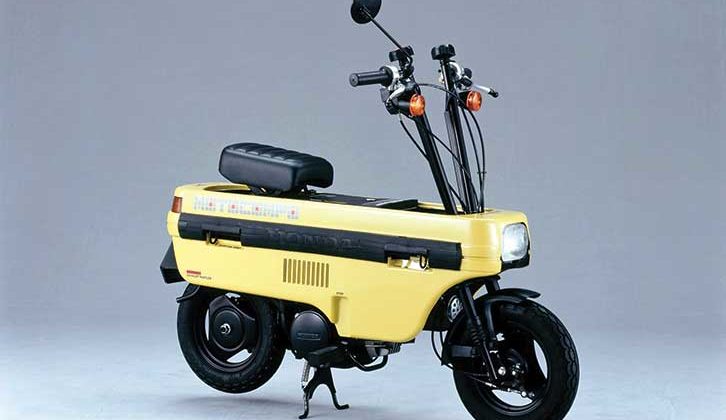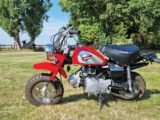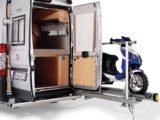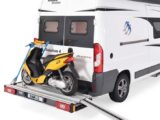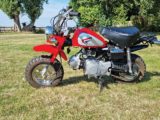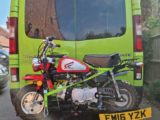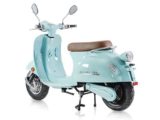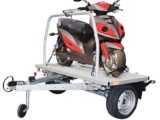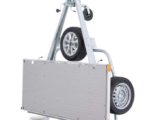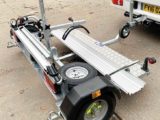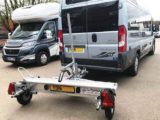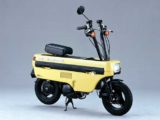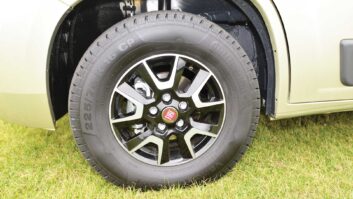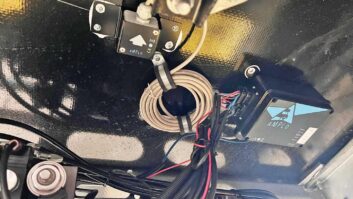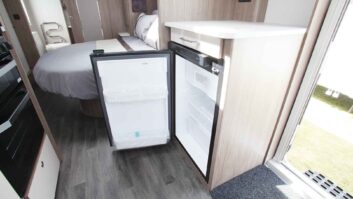We’ve all been there: you get to your motorhome site, pitch the ’van, set up the awning, rearrange the interior just how you like it, and then realise that, annoyingly, you’ve forgotten something, and the shops are a bit too far to walk. This is why many people tow a car behind their ’van.
The trouble is, towing a car behind a motorhome involves mucking about with a large, heavy trailer and then having to unstrap the car and drive it off the trailer (via bulky ramps).
By the time you’ve got the car off the trailer, it’s debatable whether this really is a labour-saver. And on top of that, taxing, insuring and maintaining a car can be pretty costly.
Happily, there is an alternative, in the form of two wheels – taking a motorbike or a moped on your motorhome tour with you. These offer a much greater range than a bicycle and you don’t have to be as fit as Bradley Wiggins to ride one. They’re available with electric or internal combustion engines, sip fuel and cost peanuts to insure and tax. In many cases, you don’t even need a special licence to use one.
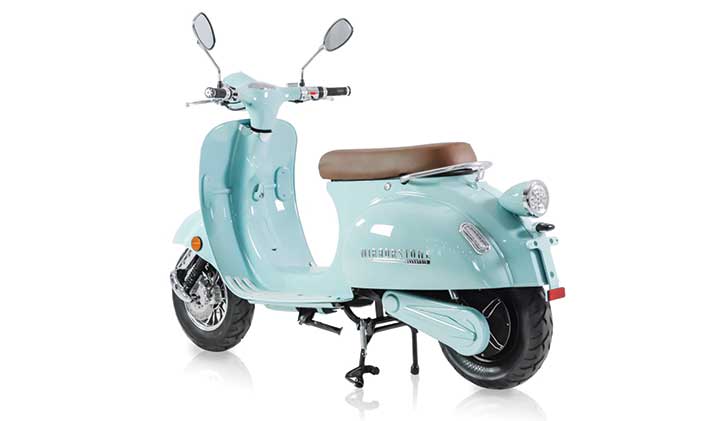
Modern motorbikes and mopeds are easy to ride and far lighter than the steel-framed bikes you might have experienced back in the day. But before you start shopping around there are a few essential things you need to know if you’re thinking of taking your motorbike on
- We talk you through the essentials of setting your motorhome tyre pressure correctly
Check your driving licence
To ride a motorbike, you’ll need to have the category code A1, A2 or A on your driving licence. If you only have a car licence (category B), you will need to take additional training to be licensed, with Compulsory Basic Training (CBT), a six-hour test, as a minimum.
Once you’ve passed CBT, you’ll be eligible to ride bikes of up to 125cc for up to two years on L-plates. You can then either upgrade your licence in stages or, if you’re over 24, take a Direct Access course to obtain your category A licence, which allows you to ride larger, more powerful bikes.
With mopeds, though, things are a bit simpler. If you have a full driving licence obtained before 1 February 2001, you can ride a moped of up to 50cc (and below 4kW – 5.3bhp) without having to take any additional tests or your CBT (although this is recommended). You are also licensed to carry a pillion passenger and don’t need to display L-plates.
If you obtained your full driving licence after 1 February 2001, it is compulsory for you to take CBT; once you pass, you’re free to ride a 50cc, below-4kW moped without L-plates (and can carry a passenger).
Buy a UK-registered moped or motorbike
This one sounds obvious, but there are lots of bargain-priced motorbikes that are not UK registered.
While some can be, if they’re under 10 years old and built to meet UK road regulations, this isn’t the case for all vehicles. Trying to register an older bike with no paperwork can be a bit of a nightmare.
In many cases, an unregistered bike might just need an MoT and a little form-filling to get a logbook (V5C), but if it needs an IVA test to check UK conformity, costs can ramp up.
Avoid all these headaches and only buy a motorbike that is registered in the UK, with a UK logbook.
Tips for purchasing a used motorbike
If you’re buying a used motorbike in a private sale, it’s very important to inspect all of the paperwork and have the bike HPI checked.
Make sure the V5C logbook is in the seller’s name and matches the address where you’re viewing the bike. Never hand over money for something that you haven’t physically seen.
Chassis numbers on motorbikes are usually stamped into the headstock underneath the handlebars, while the engine number should be quite easy to find on bikes without fairings.
On scooters, you need to do some homework to find out where the VIN numbers are located – this can vary, depending on the brand.
Always check that the bike’s VIN and engine numbers match those detailed in the logbook.
Even then, it’s easy to be caught out by a convincing scammer with forged paperwork, so make sure you ask the sellers for photos of them with the bike – we all take photos of our vehicles and if they don’t have any, that is highly suspicious, so just walk away.
If you’re unsure, buy from a local dealer who has traded for several years – they will be bound by the Consumer Rights Act 2015. We’d also recommend checking new dealers on the Companies House website (it’s free and instant), to see that they are legitimate traders.
What sort of bike should you go for?
If you’re planning on using a motorhome motorcycle trailer and have a full bike licence, you have more options – perhaps including a V-twin tourer, or maybe something more expensive, like a thumping great Harley Davidson.
Lighter and more compact bikes or mopeds suit touring life best, as they’re easier to load and store, and pinch less storage space. There are loads of great compact bikes
around these days.
Electric mopeds are also rapidly increasing in popularity, and you can buy one with either modern or retro styling, with prices starting from less than £3000 new.
These models all do under 30mph and tend to have a range of around 25 to 50 miles.
If you do prefer something that’s a bit more retro, a Monkey Bike takes some beating. Original Honda Monkey Bikes are expensive – the new retro model costs over £4000. It’s also a 125cc, which means that you’ll need to have a full bike licence in order to ride it.
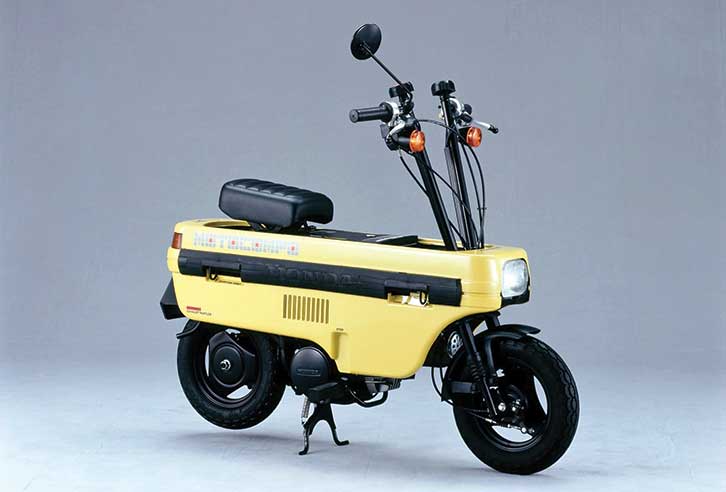
However, you can buy brand-new Chinese copies for as little as £1000 to £2000, which come with a 50cc engine and are fully UK road legal. They’re not as durable as the Honda, but for quick forays to the shops when you’re on a campsite, they’re fine.
Monkey Bikes are also very compact and lightweight, so they can easily be transported on a towbar carrier.
The new Honda Monkey 125cc is 105kg, so it’s not that heavy, either.
The important thing to bear in mind if you’re considering Monkey Bikes, mopeds, scooters and any other bike with small wheels is that they’re less stable than a full-sized motorbike over pot-holes and unmade roads, so are less suited for longer trips.
How to carry a motorbike on a motorhome
Carrying a motorbike inside your motorhome
If you don’t have a dedicated bike garage in your motorhome, simply carrying a motorbike inside your vehicle could be problematic.
The issue concerns petrol-powered bikes, which have fuel vent breathers that will naturally vent petrol fumes into the habitation area.
Racevans, which are built specifically for motorbikes, have a fully sealed garage to prevent these fumes from entering the living area of the vehicle. As well as the health risk, petrol fumes in a ’van present an ignition risk from gas hobs and electrical sparks.
With electrically powered bikes, however, fumes are not an issue and you just need to consider how to secure the bike safely in transit and prevent it from damaging the interior while you are loading or removing it.
If you haven’t got a dedicated garage, it can be a pain to have to negotiate a large bike every time you want to grab a cold drink or access the toilet.
You will also need to consider how much payload you have available in your motorhome – this will involve a visit to your local weighbridge – and ensure that you stick to the maximum axle weights.
Unless you’re a dedicated two-wheel enthusiast, you’ll probably be best off stowing your moped or motorbike outside your motorhome.
Carrying a motorbike on a motorhome towbar
We’ve said it before, but if you haven’t got a towbar fitted to your motorhome, it’s well worth investing in one – they really are the universal attachment point for a whole host of extra toys that you can acquire.
Not all ’vans can have one fitted, however – vehicles with a long rear overhang are generally the least well suited for a towbar – so check with your motorhome manufacturer before you decide to invest any money.
Some vehicles also need to have chassis extensions added to the rear of the chassis before a towbar can be fitted – find out if you have sufficient payload for this additional steelwork by visiting a weighbridge and obtaining the individual weights for the front and rear axles. All vehicles carry different touring kit, so this is essential – you can’t rely on a brochure weight.
If your motorhome was registered after 1 April 2012 (usually on a 62-plate or newer), it must be fitted with a Type Approved towbar system.
There are several companies that specialise in motorhome-specific towbar fitting and we’d highly recommend using one of these.
Some towbars even come with steel rear protection beams, which protect the rear valance of your motorhome from parking bumps, and you can also purchase them with integrated bike racks built in.
For lighter bikes, such as Monkey Bikes (which are available in 50cc guise and can be ridden without L-plates if you have a full car licence obtained before 1 Feb 2001), you can get brackets that bolt directly to a two-bolt tow hitch.
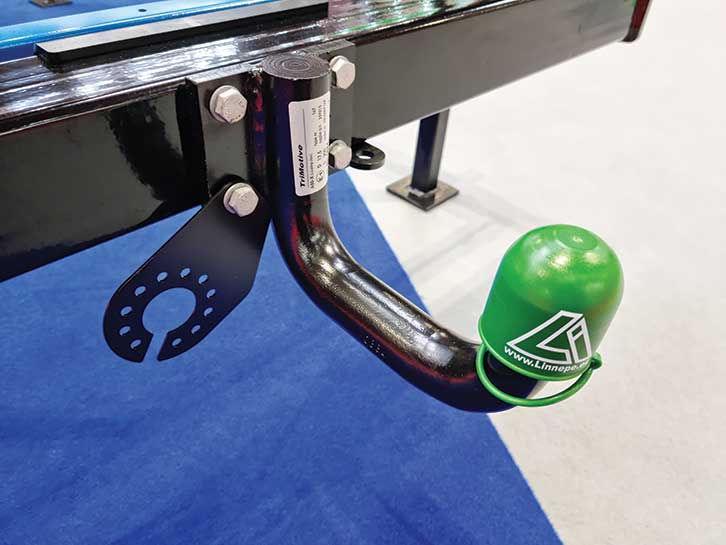
Shire Bikes, for example, sells special Monkey Bike racks for just £100, and as they weigh under 10kg (with the Monkey Bike being around 60kg), they should be under the towball noseweight of most motorhomes.
Finally, don’t forget to let your insurer know that you’ve had a towbar fitted, and double check that any vehicle warranty won’t be affected.
Using a bike rack
Unit payload used to be the limiting factor for a bike rack, but there are lots of modern innovations on the traditional scooter rack that get around this issue (however, it’s still crucial to keep in mind your motorhome weights and the safety limits before mounting any load on the rear wall, particularly if you have a coachbuilt.
Most of the UK’s towbar specialists offer a scooter rack platform of some description, so tracking down your nearest supplier is the first step.
Al-Ko has a range of racks from Sawiko that bolt onto motorhomes, such as the Kawa II platform, which can support a scooter weighing up to 150kg, or three ebikes.
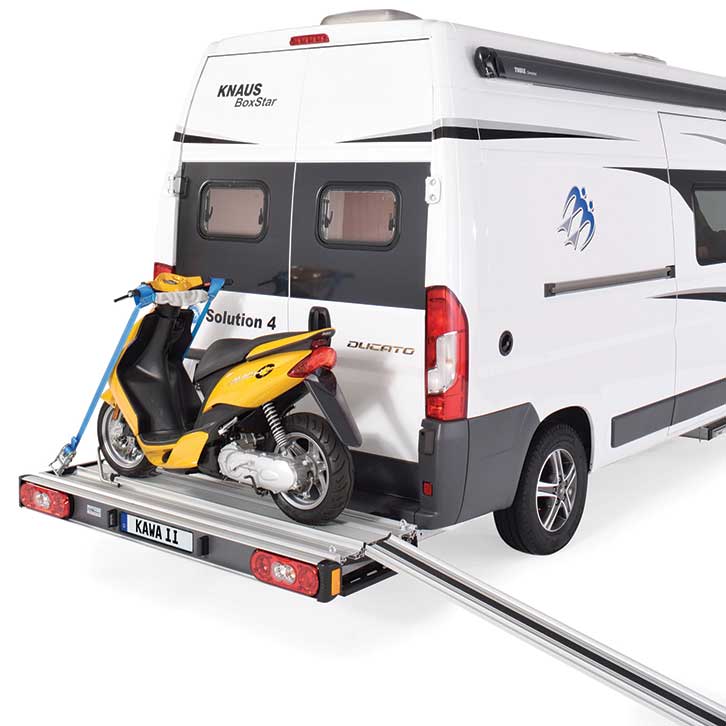
Sawiko also produces the Agito range of platforms, which have the benefit of being hinged, so that you can still access the barn doors of a panel van conversion. This range is offered with three different payloads: Agito Top (maximum 80kg), Agito 120 (120kg) and Agito 150 (150kg).
Another option is Sawiko’s Trigo Van version, with a maximum capacity of 80kg. This folds when not in use, to allow you to use the towbar, and is primarily designed for up to three ebikes, but could easily hold a small scooter.
Many of these racks will either bolt to the towbar or attach directly to the rear of a Ducato panel van, but if you are limited on payload, you can also obtain racks that partially use the noseweight and have additional wheels to help balance the load. These are halfway between a rack and full-size trailer, and are designed to allow motorhomes with limited payload to carry heavier bikes.
Easy-Lifter, an example of this type of rack, bolts directly to a two-bolt towball and uses large castor wheels, so it can be reversed with ease. They cost from £1600 and lift hydraulically.
Sawiko’s universal Wheely trailer can house one bike or scooter and is very compact; it can be stored upright when not in use. It supports up to 750kg.
The Wheely Duo is also available to carry two bikes (or several ebikes, or one of each) and will hold 750kg unbraked, or 950kg in braked form.
Prices for Wheelys start from around £2000 and go up to £3500.
Distributed in the UK by Aphiam, Linnepe has a range of chassis-mounted racks to suit scooters; the aluminium and steel Porto is the latest addition.
It also has the Slide Port rack, for barn-door panel van conversions, which slides out of the way and still allows access to the rear of the ’van.
Another specialist brand, Armitages, has a variety of bike racks, ranging from chassis-mounted versions that can carry bikes of up to 200kg (payload dependent) to compact trailers that are set low to allow for easy loading and can carry bikes of up to 290kg.
- Take a look at our guide to how to load a motorhome to make sure you’re packing for safe travel.
Motorcycle trailers for motorhomes
You can buy trailers in all shapes and sizes these days, with a brand-new basic lightweight motorcycle trailer for a motorhome that’s suitable for a single bike costing under £500. Secondhand, you’ll find that they go for a few hundred quid.
Some even fold up, so they can be stored in the back of your car, in the motorhome garage, or in the back of your domestic garage. If you plan on carrying it in your motorhome garage, do check your payload first.
The other thing you will need to clarify is the maximum weight that you can tow, and that any trailer combination you attach is under the maximum noseweight of the towbar.
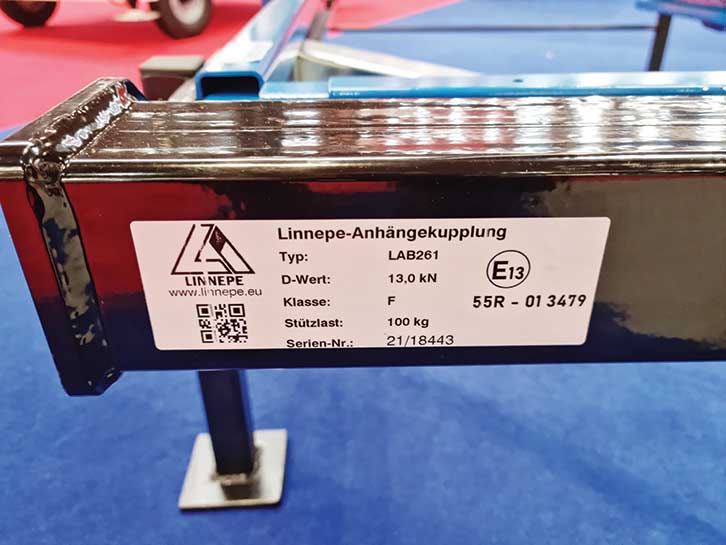
Noseweight is the vertical load pushing down on the trailer and is typically between 75kg and 150kg for most motorhome towballs.
This is denoted by the S-number, which is written on the spec sticker of most Type Approved towbars.
You’ll also need to check in your vehicle manual for the manufacturer’s maximum recommended noseweight – this might differ from the towbar maker’s. The value that is the lowest weight is the one that applies and must not be exceeded.
You can buy bike trailers for up to three bikes and even get covered versions, too, but these are pricier and bulkier to move and store.
Most bike trailers won’t trouble the towing capacity of most motorhomes, which are usually 1000-2000kg, but you do need to check your driving licence categories and codes for the maximum weight of trailer you’re allowed to tow. Generally, though, bike trailers with motorbikes on them will weigh in at a mere fraction of any car carried on a trailer.
For heavier bikes, such as larger Harley Davidsons or Honda Goldwings, you will need to use a trailer.
Riding gear
As well as the motorbike or moped, you’ll also need to invest in some safety kit for yourself and your passenger.
You can buy all manner of reinforced trousers and jackets for motorbikes and these are highly recommended for both their protection and their durability.
Full riding leathers are not cheap, but they do offer the best protection.
Don’t skimp on the helmet, either – find one that has been homologated to ECE 22.06 regulations. The inferior ECE 22.05 testing will cease to be valid after June 2023, although you can still use them on the road, so it’s best to avoid helmets with the older homologation.
Full-face helmets are best as they will protect you better in a crash and against the weather, but you can get ones with hinged fronts, which make it easier to talk to people without having to remove the whole thing
For all riding gear, make sure you try it on first and that it fits well – a loose helmet is not worth having. The helmet should fit snugly, but be comfortable. Different brands will fit different head shapes, so it’s important to visit a shop and try on a selection before you buy.
You also need to be prepared for the British weather! You might set off from the campsite in the sun, but all bikers need to be prepared for hail/snow/rain/wind/biblical plague at the drop of a hat. Always wear something waterproof.
Verdict on taking a motorbike on a motorhome tour
If you want to be mobile after you’ve pitched up, opting for a motorbike or a scooter can be an enjoyable way to pop to the shop for supplies.
A scooter is far cheaper to run than a car and much easier to park, and a secondhand one often costs less than a posh ebike. You don’t have to buy one powered by fossil fuel, either.
- Take a look at our guide to maximising your motorhome fuel consumption
For more information about taking a motorbike on a motorhome tour, see…
- Companies House
- Driving licence code check
- Obtain a motorcycle licence
- Al-Ko Sawiko
- Armitages
- Easy-Lifter
- Linnepe Products
- Shire Bikes
Future Publishing Limited, the publisher of Practical Motorhome, provides the information in this article in good faith and makes no representation as to its completeness or accuracy. Individuals carrying out the instructions do so at their own risk and must exercise their independent judgement in determining the appropriateness of the advice to their circumstances. Individuals should take appropriate safety precautions and be aware of the risk of electrocution when dealing with electrical products. To the fullest extent permitted by law, neither Future nor its employees or agents shall have any liability in connection with the use of this information. Double check any warranty is not affected before proceeding.
If you’ve enjoyed reading this article, why not get the latest news, reviews and features delivered direct to your door or inbox every month. Take advantage of our brilliant Practical Motorhome magazine SUBSCRIBERS’ OFFER and SIGN UP TO OUR NEWSLETTER for regular weekly updates on all things motorhome related.
